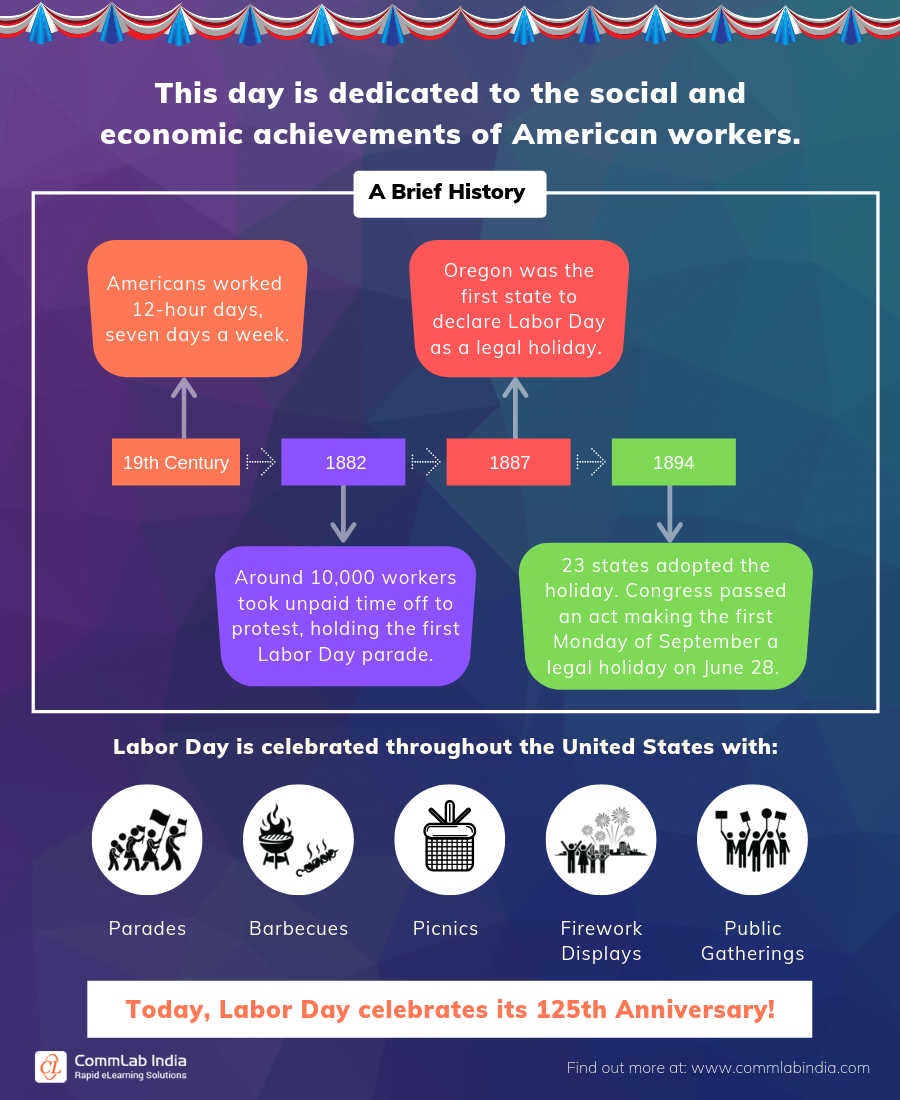Happy Labor Day!

Celebrated on the first Monday of September every year, the Labor Day, as the Department of Labor puts it, “pays tribute…to the creator of so much of the nation’s strength, freedom, and leadership — the American worker.”
There is quite a bit of disagreement amongst Americans over how it all began; but most agree it started in the late 19th century, at a time when the average American worker, in order to carve out a basic living, worked for 18-20 hours a day, seven days a week.
As manufacturing took over agriculture as the wellspring of American employment during the Industrial Revolution, tens of thousands of workers and many labor organizations around the country rallied and protested against the poor working conditions, compelling employers to renegotiate the number of working hours and wages.
Advocates of trade unions advanced that a day be dedicated to celebrate labor. Many of these protests turned gruesome and violent, including the infamous Haymarker riot of 1886 in which several Chicago cops and workers were killed; other protests led to thousands of workers marching from City Hall to Union Square in New York City – taking unpaid time off. This was the first Labor Day parade in the U.S. history.
Chicago also witnessed the Pullman strike of 1894, which essentially contributed to initiating the first Labor Day in America.
Over the years, many countries have recognized the contributions of their workers. As a result, countries all over the world — including Germany, India, France, to name a few — celebrate the first of May every year as a national, public holiday commonly referred to as “International Workers’ Day,” or “Labour Day,”. Canada, on the other hand, celebrates its Labor Day on the same day as America — the first Monday of September.







